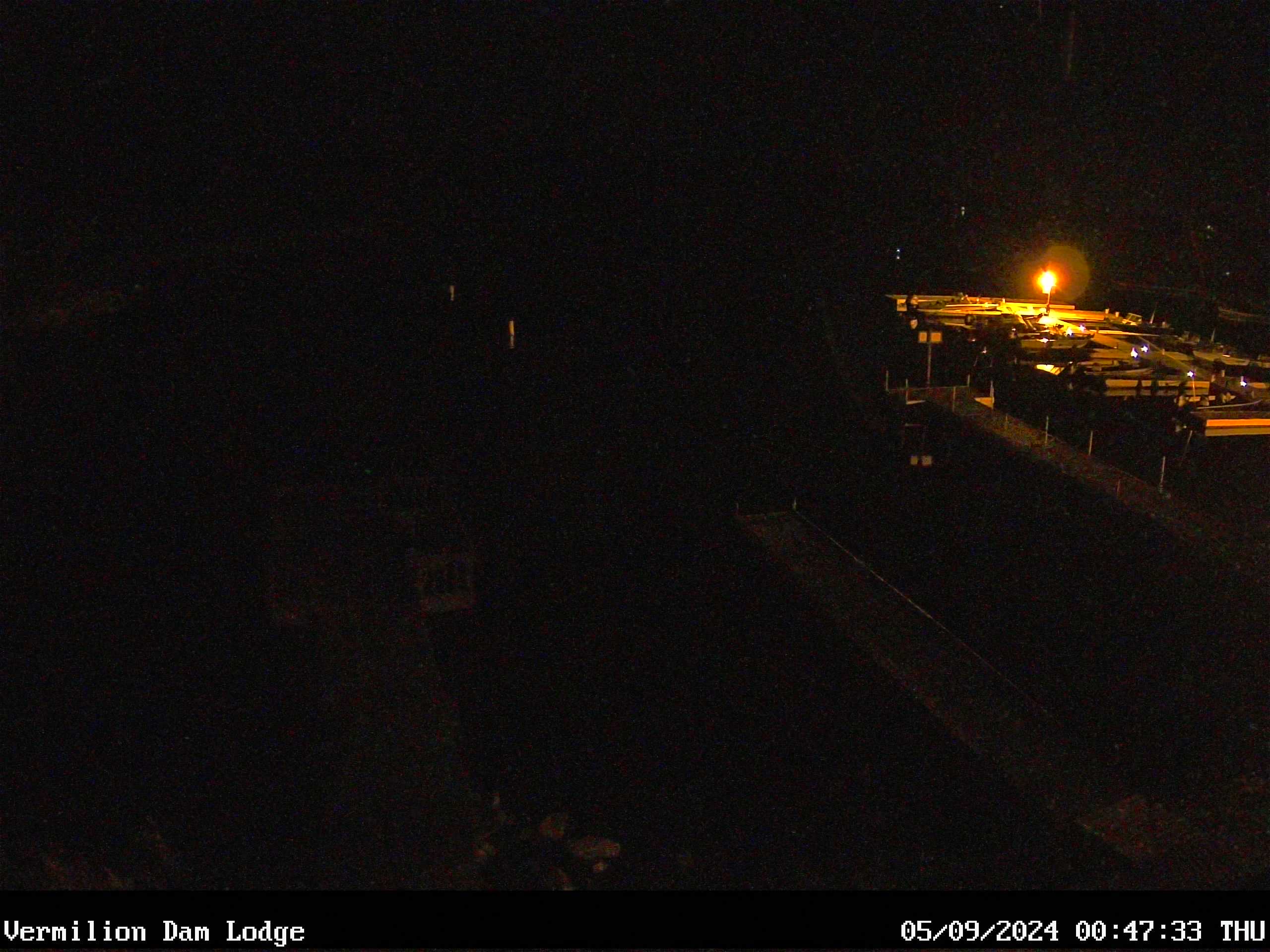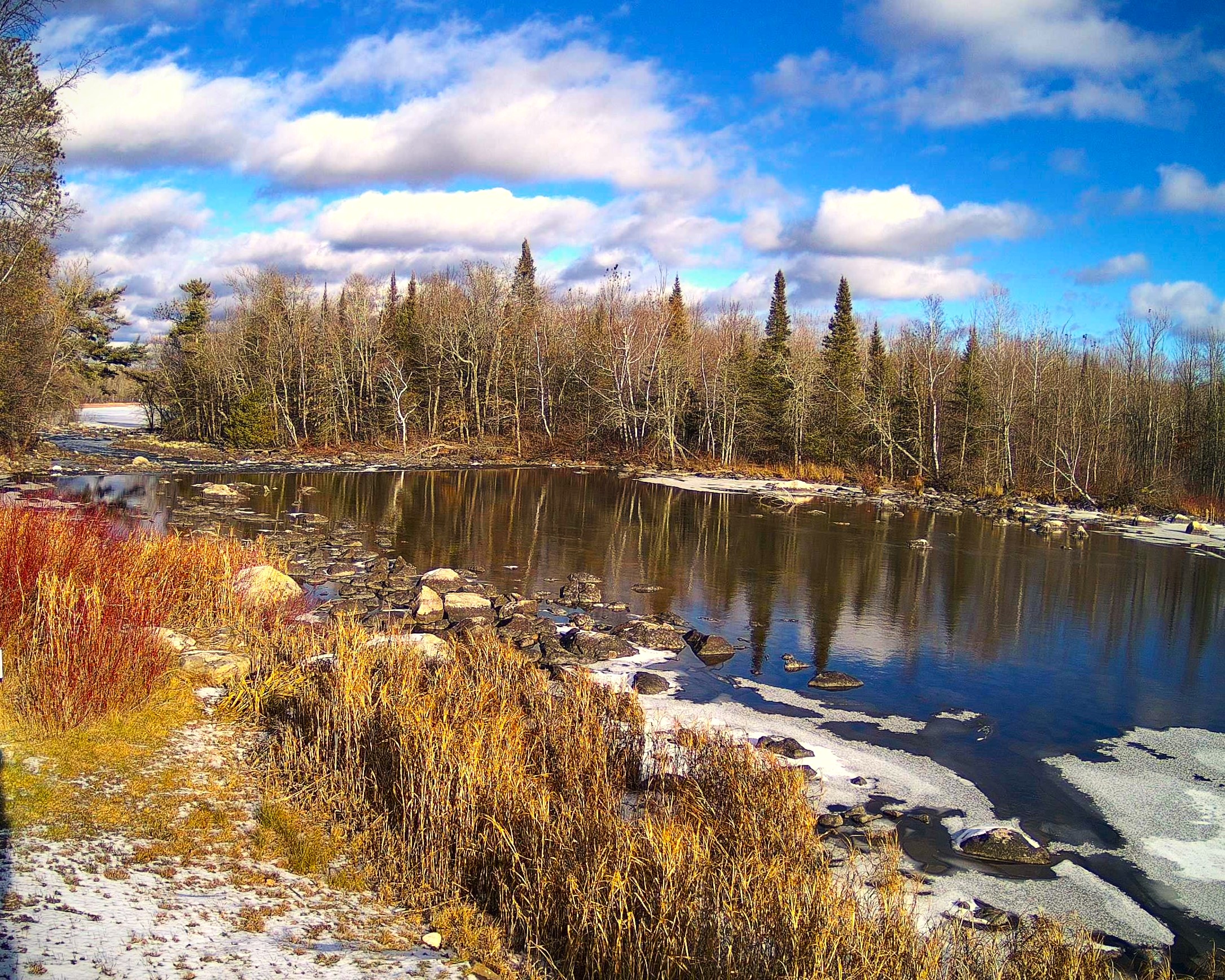Lake Vermilion Live Cam
Private island on lake Vermilion in northern Minnesota


History
Lake Vermilion is a large freshwater lake located in northeastern Minnesota, United States. It has a rich history that spans thousands of years, shaped by various indigenous cultures and later European settlers. Here is an overview of Lake Vermilion's history:
Indigenous Peoples: The region around Lake Vermilion has been inhabited for thousands of years by various indigenous peoples, including the Dakota Sioux and the Ojibwe (also known as Chippewa). These Native American tribes relied on the lake and its surrounding forests for sustenance, trade, and spiritual significance.
Fur Trade Era: In the late 17th and early 18th centuries, European explorers and fur traders, primarily French and British, began to explore the area. The fur trade was a significant industry, and Lake Vermilion's forests were rich in beaver and other valuable fur-bearing animals.
European Settlement: The late 19th century saw the arrival of European settlers in the Lake Vermilion area. Logging became a major industry, with timber being floated down the Vermilion River to sawmills. The town of Tower, located on the eastern shore of Lake Vermilion, became a hub for the logging industry.
Tourism and Resorts: By the late 19th and early 20th centuries, the natural beauty of Lake Vermilion and its surrounding wilderness began to draw tourists and outdoor enthusiasts. Resorts, lodges, and cabins started to pop up along the shoreline, offering visitors a chance to experience the area's natural splendor.
Mining: In the early 20th century, mining became another major industry in the Lake Vermilion area. The Soudan Underground Mine, located near the lake, was one of the most productive iron mines in Minnesota. This industry played a significant role in the local economy for several decades.
Conservation Efforts: In the mid-20th century, there was growing concern about the environmental impact of logging and mining in the Lake Vermilion area. Efforts were made to protect the lake and its surrounding wilderness, leading to the establishment of the Superior National Forest and the Boundary Waters Canoe Area Wilderness.
Modern Times: Today, Lake Vermilion is a popular destination for outdoor activities such as fishing, boating, camping, and hiking. It's known for its clear, clean waters and abundant wildlife. The lake and its surrounding areas are managed for conservation and recreation.
Cultural Significance: Lake Vermilion holds cultural significance for both indigenous peoples and the broader community. It's considered a place of natural beauty and tranquility, attracting visitors from all over the United States.
Overall, Lake Vermilion's history is a story of natural abundance, human industry, conservation efforts, and the enduring appeal of its wilderness to people seeking solace in nature.
Top Tourist Attractions
The Lake offers a wide range of attractions and activities for visitors to enjoy. Here are some of the top tourist attractions around Lake Vermilion:
- Voyageurs National Park: This national park is a short drive from Lake Vermilion and offers stunning natural beauty with a network of interconnected waterways. Visitors can explore the park by boat, kayak, or canoe and enjoy hiking trails, wildlife viewing, and stargazing.
- Soudan Underground Mine State Park: This historic park features an underground mine tour, where visitors can descend into the depths of the earth and learn about the mining history of the area. The park also has hiking trails, a visitor center, and opportunities for underground physics experiments.
- Vermilion Falls: Located near the town of Tower, Vermilion Falls is a picturesque waterfall on the Vermilion River. It's a popular spot for picnicking, photography, and enjoying the natural beauty of the area.
- Tower-Soudan Historical Society Depot: This museum in the town of Tower provides insight into the history of the region, including its mining and logging industries. It features exhibits on local culture, industry, and the people who shaped the area.
- Fortune Bay Resort Casino: This resort and casino complex on the shores of Lake Vermilion offers a range of entertainment options including gaming, dining, live shows, golf, and a marina.
- Lake Vermilion State Park: This state park, situated on the eastern end of the lake, offers a variety of recreational activities such as hiking, birdwatching, and fishing. It also provides camping facilities for those looking to experience the natural beauty up close.
- Ely Arts and Heritage Center: Located in the nearby town of Ely, this center showcases the cultural heritage of the area through rotating exhibits, art displays, and workshops.
- Boundary Waters Canoe Area Wilderness: While not directly on Lake Vermilion, this nearby wilderness area is a must-visit for outdoor enthusiasts. It's one of the most pristine and unspoiled wilderness areas in the United States, offering opportunities for canoeing, camping, hiking, and wildlife viewing.
- Cook Country Historical Society: Situated in Grand Marais, this museum provides a comprehensive look at the history and culture of Cook County, which includes the Lake Vermilion area.
- Golf Courses: Lake Vermilion has several golf courses with picturesque views of the lake and surrounding forests, offering a relaxing way to enjoy the outdoors.
Remember that the availability of activities and attractions may vary depending on the season, so it's a good idea to check in advance, especially if you have specific interests in mind.
Climate
The Lake area experiences a continental climate characterized by distinct seasons. Here is an overview of the climate around Lake Vermilion:
- Winter (December - February): Winter in the Lake Vermilion region is cold and snowy. Average high temperatures range from around 20°F to 30°F (-6°C to -1°C). Average low temperatures can drop to 0°F to 10°F (-18°C to -12°C). The lake may freeze over, providing opportunities for ice fishing and winter sports.
- Spring (March - May): Spring is a transitional season with gradually warming temperatures. Average high temperatures range from 40°F to 60°F (4°C to 16°C). Average low temperatures range from 20°F to 40°F (-6°C to 4°C). The ice on the lake starts to thaw, and the region experiences a burst of new plant and animal life.
- Summer (June - August): Summer is warm and humid, making it a popular time for outdoor activities. Average high temperatures range from 70°F to 80°F (21°C to 27°C). Average low temperatures range from 50°F to 60°F (10°C to 16°C). This is the prime season for activities like boating, swimming, fishing, and hiking.
- Fall (September - November): Fall is a beautiful season with colorful foliage. Average high temperatures range from 50°F to 70°F (10°C to 21°C). Average low temperatures range from 30°F to 50°F (-1°C to 10°C). As the temperatures cool, the area becomes a popular destination for fall foliage tours and hunting.
Overall, Lake Vermilion experiences a wide range of temperatures throughout the year, from cold winters to warm summers. The lake itself plays a significant role in moderating the local climate, influencing weather patterns and providing recreational opportunities for visitors in every season.
Geography
Lake Vermilion is a large and picturesque freshwater lake located in northeastern Minnesota, United States. It is renowned for its natural beauty and is a popular destination for outdoor enthusiasts. Here are some key aspects of the geography of Lake Vermilion:
- Lake Vermilion is situated in the Arrowhead Region of Minnesota, near the border with Canada. It is approximately 55 miles (88.5 kilometers) north-northeast of the city of Duluth and covers parts of St. Louis County.
- Lake Vermilion is one of Minnesota's largest lakes, covering an area of about 39,271 acres (approximately 158.8 square kilometers). It is known for its extensive shoreline, which features numerous bays, inlets, and peninsulas.
- The lake has an irregular shape with numerous arms and bays that give it a rugged and picturesque appearance. Some of the prominent bays and sections of the lake include Big Bay, Norwegian Bay, Wakemup Bay, and Pike Bay.
- Lake Vermilion is relatively deep, with a maximum depth of approximately 76 feet (about 23 meters). It has many underwater rock formations, which make it popular among anglers for its diverse fish populations.
- Lake Vermilion is dotted with numerous islands, both large and small. Some of the larger islands include Oak Narrows Island, Potato Island, and Hinsdale Island. These islands provide additional opportunities for exploration and recreation.
- The lake is surrounded by a mix of forests, wetlands, and rocky terrain. The landscape is characterized by pine and hardwood forests, making it an attractive location for hiking, birdwatching, and wildlife observation.
- The Vermilion River is the primary inlet into Lake Vermilion, and it flows out of the lake on its eastern end. The river eventually joins the Crane Lake chain of lakes before flowing into the Boundary Waters Canoe Area Wilderness.
- A significant portion of the Lake Vermilion area is protected by conservation measures. The Boundary Waters Canoe Area Wilderness and Superior National Forest encompass nearby lands and contribute to the preservation of the lake's natural surroundings.
- Lake Vermilion is a popular destination for recreational activities such as boating, fishing, swimming, camping, and hiking. It offers numerous public access points and resorts along its shores to accommodate visitors.
Overall, Lake Vermilion's diverse geography, with its numerous bays, islands, and pristine wilderness surroundings, makes it an attractive destination for those seeking to immerse themselves in the natural beauty of northern Minnesota.